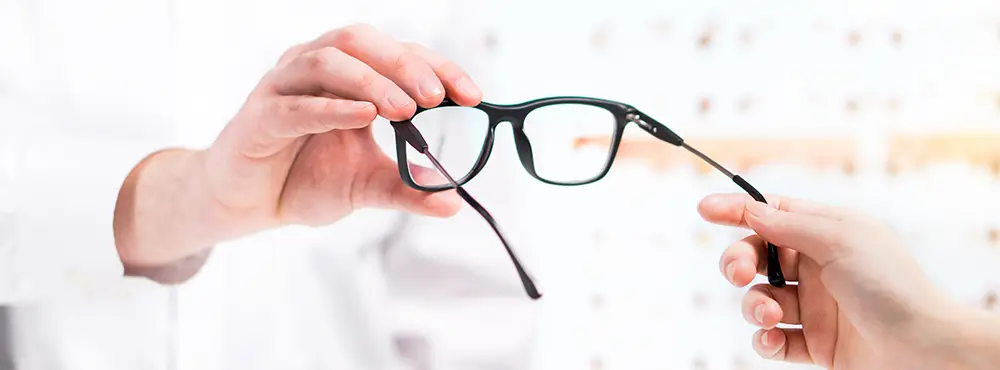Understanding your glasses size is essential, as it directly affects a how well your glasses frames fit. A poor fit can cause your glasses to slide off and sit out of alignment with your eyes. Over time, this misalignment can result in discomfort, headaches and eye strain. Our handy guide will help you learn about glasses measurements, so you can choose frames that fit your face comfortably and provide the clearest vision.
Understanding frame measurements
Let’s start by understanding about different parts and dimensions of glasses. They key elements of a pair of glasses include:
- Total horizontal frame width
- Lugs/End piece
- Lens height
- Bridge width
- Temple arm length
- Lens diameter/Lens width
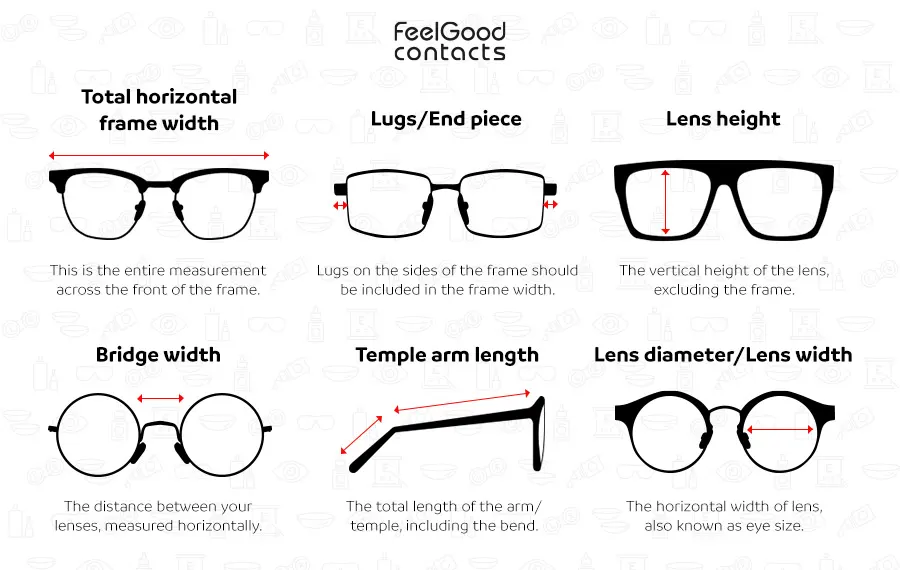
How and where are glasses measurements written?
If you open the arms of your glasses, you’ll usually find the measurements printed on the inside of one of the temple arms or underneath it. They will be displayed as three numbers with hyphens. For example, 56–17–140 (please refer to the image below). Each number displays measurements of different parts of the frame in millimetres (depicted on the outside of the temple here for clarity):
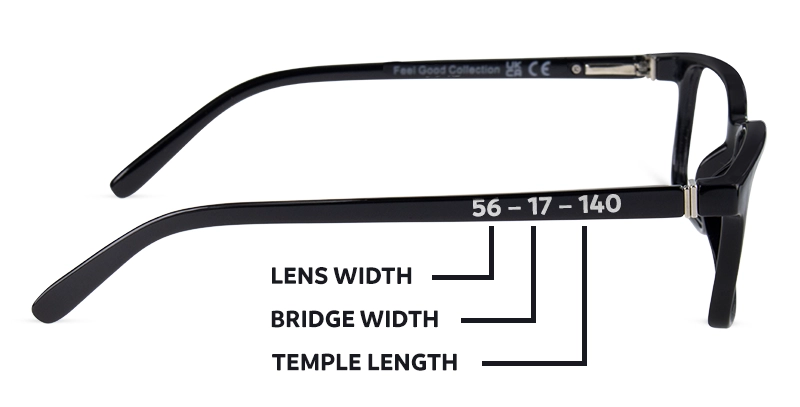
Different glasses sizes at Feel Good Contacts
We stock four frame sizes depending on the lens width – small (48mm or less), medium (49mm to 53mm), large (54mm to 57mm) and extra large (58mm and more).
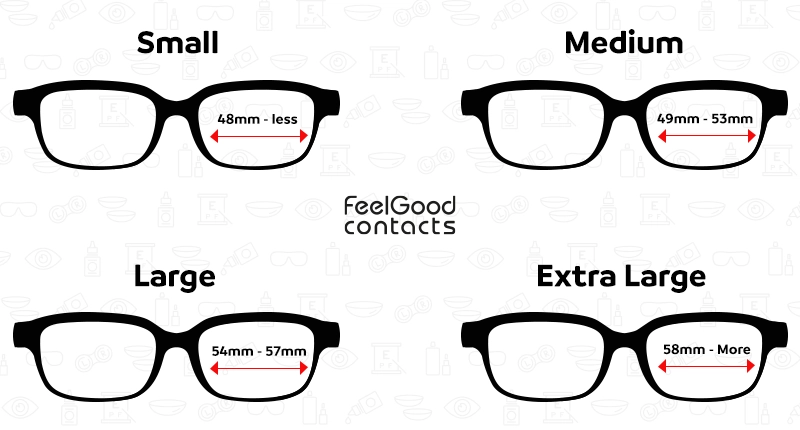
Optician-approved tips for glasses measurements
Getting the right fit is all about comfort and it’s even more important when you are shopping online and cannot try on the frames in person. Here are some pro tips to make sure your glasses feel as good as they look:
1. Frame position matters
The top of your frame should sit no higher than your eyebrows and the width should match the width of your face at the temples. If the bottom edge rests on your cheeks, they might rub or feel uncomfortable.
2. Pick the right size for your face
- Small or narrow faces: Ideal frame width is less than 129mm
- Medium faces: Frame widths between 130 to 139mm work best
- Wider faces: Frames over 139mm will give the best fit
Choosing the right size will help keep your features balanced and your glasses comfortable.
3. Check the bridge fit
The bridge should sit comfortably without squeezing or sliding. If it’s too narrow, it’ll pinch and if it’s too wide, the glasses won’t stay put and slip off. Adjustable nose pads can help enhance the fit.
4. Measure your frame width accurately
If you don’t know your frame size, here’s how to measure:
- Stand in front of a mirror and hold a ruler in line with your temples.
- Measure the distance between your temples in inches.
- Multiply by 25.4 to convert to millimetres.
- Look for frames close to this total width (within 2–3 mm).
When measuring the frames themselves, include the lens widths, bridge width and any decorative parts that stick out.
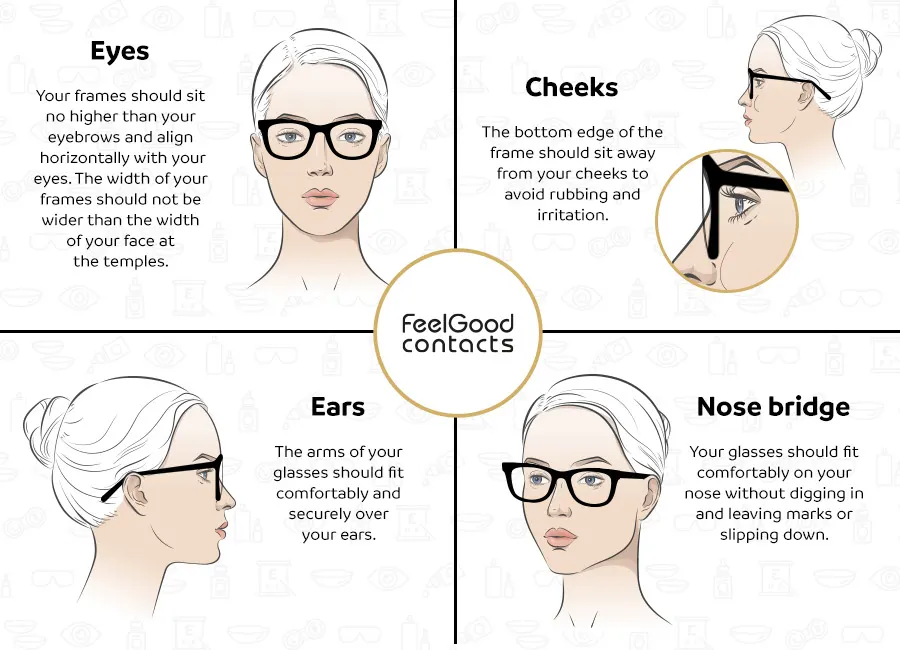
With the right measurements, you can choose a pair that fits perfectly and feels comfortable all day. Order your glasses online from Feel Good Contacts for superfast delivery, free on order over £59.
Quick links:
How to choose the best lenses for my prescription?
How do I read my glasses prescription?
How to tighten my glasses?
Disclaimer: The advice in this article is for informational purposes only and does not replace medical care or an in-person check-up. Please check with an eyecare professional before purchasing any products or remedies. For information on our article review process, please refer to our Editorial Policy.

 Offers
Offers Account
Account
 Favorite
Favorite
 Basket
Basket

 OFFERS
OFFERS











